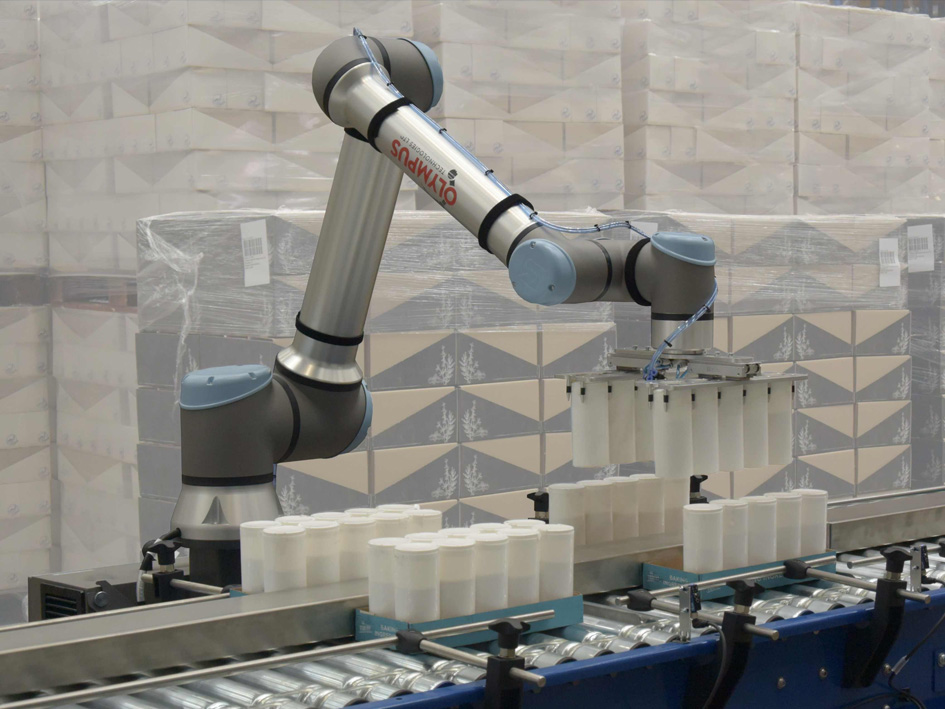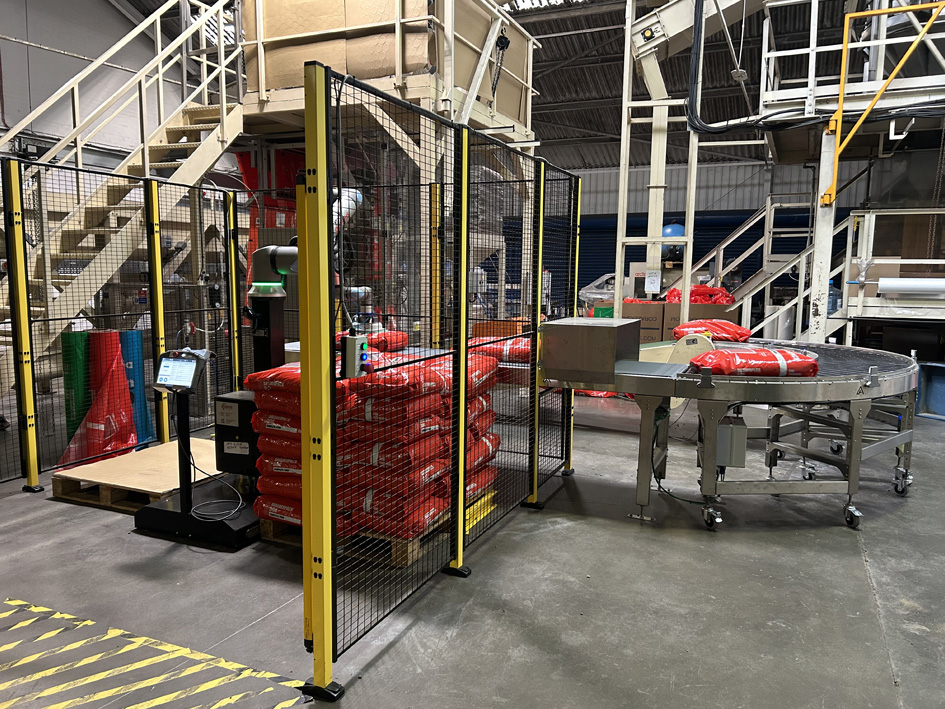Why Cobot Welding Matters Now
Across the manufacturing industry, companies face a growing challenge: demand for consistent quality continues to rise while the supply of skilled welders steadily declines. The American Welding Society predicts a significant shortage of human welders over the next decade, putting pressure on operations to maintain output.
This is where cobot technology steps in. Cobot welding - also known as collaborative welding - bridges the gap between human expertise and the demands of modern welding operations. Unlike traditional industrial robots, which are confined behind bulky safety fences, collaborative robots (cobots) are designed to be more flexible allowing for varied safety configurations, ensuring human operators can work safely alongside the cobot. This is especially valuable in high mix low volume or small batch production, where manual welding still dominates.
What Is Cobot Welding?
Cobot welding uses collaborative robots to automate parts of the welding process while working safely alongside humans. These robots handle different tasks, including material handling, and inspection, with minimal need for advanced robotics expertise.
Unlike traditional welding robots, which require complex setups and expert technicians, welding cobots are easy to program and quick to deploy in existing production lines. Designed to work safely alongside human welders, they enhance productivity without displacing the workforce - making them ideal for small to medium businesses.
Key Benefits of Cobot Welding
1. Improved Weld Quality and Consistency
Cobot welding systems deliver repeatable welds with excellent precision. The Olympus Technologies Welding software and the repeatability of cobot positioning ensure consistent weld quality, reducing material waste and eliminating common defects. This is critical in sectors like metal fabrication, where high quality welds are essential.
2. Enhanced Workplace Safety
Using Collaborative robots within welding minimises exposure to heat, fumes, and radiation by keeping human workers at a safer distance, significantly improving workplace safety. By automating repetitive tasks and minimising physical strain, they reduce the risk of injury in the welding industry.
3. Lower Costs and Faster Turnaround
Cobot welding offers major cost savings over traditional automation. With quick programming and setup, companies experience minimal downtime and lower labour costs. For small batch manufacturing, where agility is crucial, cobots help automate welding tasks efficiently and economically.
4. Optimised Workforce Utilisation
In a sector trying to address workforce shortages, cobots free up human welders for more intricate welding tasks. Because they require only minimal robotics experience, operators can be trained quickly, allowing fast adoption of robotic welding even in shops unfamiliar with industrial automation.
How Collaborative Robots Enhance Welding Operations
Welding cobots use intuitive software that simplify programming and help achieve weld accuracy and maintain uniform weld quality across production runs.
Whether in a specialised welding company or general manufacturing sector, their ability to work alongside human welders safely makes them ideal for flexible automation across various industries.
Steps to Implement Cobot Welding in Your Workflow
Introducing cobots to your welding process is simpler than you might expect:
Start by identifying bottlenecks. Are you losing time to manual welders, inconsistent quality, or high rework? Once clear, look at suitable systems.
Choose a cobot welder based on reach, payload, and compatibility with your tools. Proven solutions in metal fabrication or small batch production are a smart place to begin.
Train your staff. Most systems are designed for users with minimal robotics experience, but structured training boosts confidence and safety.
Finally, calculate ROI. Compare investment costs with gains in throughput, production efficiency, and cost savings. Many see a return within 12 - 18 months.
Real-World Results from Cobot Welding
The benefits of cobot welding are measurable across industries:
- 4 x productivity for world-renowned manufacturer of expanded metal mesh solutions The Expanded Metal Company - Read case study here.
- Project turnaround times have been cut by approximately 50% for ADS Laser Cutting, the premier metal laser cutting, folding, fabrication, finishing & assembly provider in the UK - Read case study here.
- Reduced cycle times and improved productivity for Brendon Powerwashers, one of the leading brands in the construction and rental markets - Read case study here.
These outcomes reflect the real-world shift from manual welding to automated welding - without the complexity of traditional robots.
The Future of Cobot Welding Technology
The collaborative robots market is rapidly evolving. Future cobot welding systems will feature AI, machine learning, and predictive maintenance to fine-tune performance. Interfaces will likely include voice or gesture control, making cobot technology even easier to use.
Beyond welding, cobots will soon manage full workflows - from material handling to inspection - streamlining entire welding operations under one programmable solution.
Should You Invest in Cobot Welding?
If you're in small to medium manufacturing and need to scale without more staff, cobot welding makes strategic sense. It's safer, faster, more precise, and compatible with existing workflows.
In a world where skilled labour is scarce and quality expectations are high, the benefits of cobot welding for small batch manufacturing are too valuable to ignore.
FAQ's
How does cobot welding differ from traditional industrial robots?
Cobot welding uses collaborative robots that are safe to use without safety cages and can work alongside human operators. In contrast, traditional industrial robots are typically caged behind bulky safety fences due to safety concerns and require specialised programming.
Can cobot welding improve consistent weld quality?
Yes. With the Olympus Technologies Welding software and the repeatability of cobot positioning, cobot welding systems deliver repeatable welds that reduce defects and material waste, even in high-precision environments like metal fabrication.
Are cobots a good solution for addressing skilled welder shortages?
Absolutely. Cobots help address workforce shortages by handling repetitive tasks, freeing human welders to focus on more complex welding tasks. Plus, they require minimal robotics experience, making them accessible to most teams.
What industries benefit most from cobot welding?
Cobot welding is ideal for small batch production, especially in metal fabrication, automotive, and general manufacturing sector settings. Businesses seeking cost savings and flexible automation will see the most impact.
Thinking of adding a cobot to your line? Contact Olympus Technologies for a no-obligation consultation, product demonstration, or to request a quote tailored to your production requirements.














